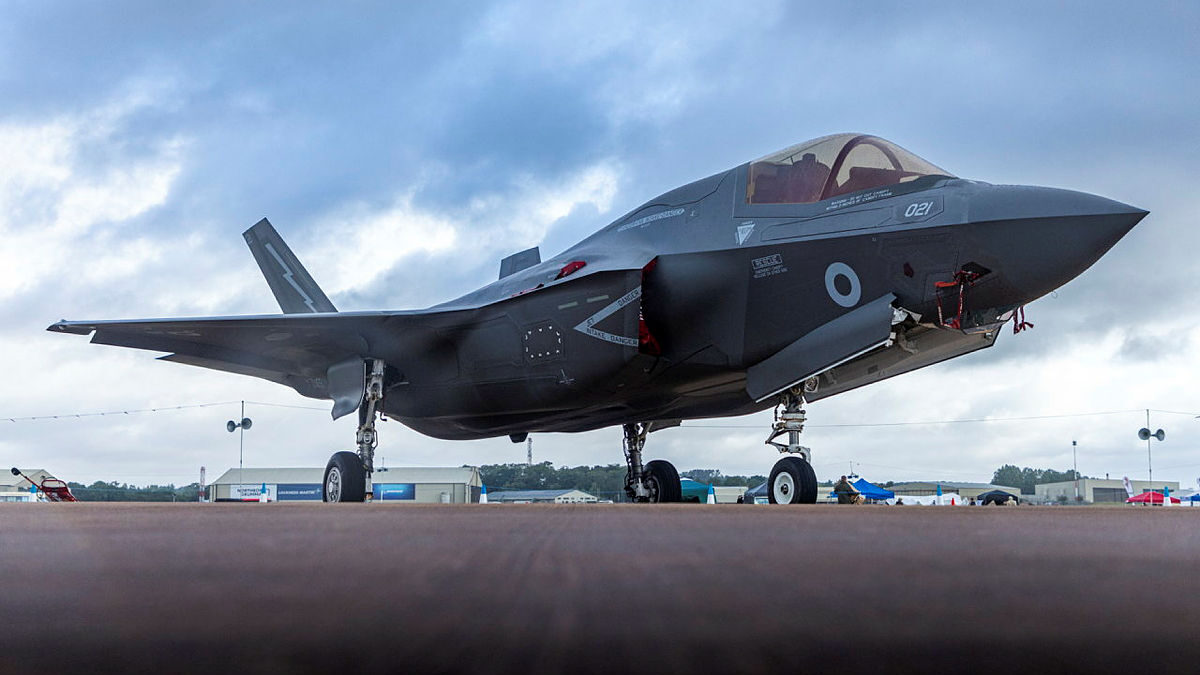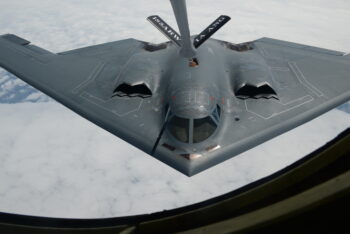
The UK MoD’s latest annual report shows it incurred a $108 loss after a F-35B was written off when it crashed into the Mediterranean Sea (UK MoD)
BELFAST — Annual United Kingdon military spending increased by £6.9 billion ($8.9 billon) over 2022-2023 to reach a total of £52.8 billion ($67.8 billion), according to newly released MoD figures, which also revealed that the cancellation of a key armored vehicle program meant a hefty chunk of British military funds — £473 million ($607 million) — was lost.
Overall, defense spending for the year was largely boosted by a £4.1 billion ($5.3 billion) increase in capital expenditure, though there were other marginal jumps in Defense Equipment and Support (DE&S), and inventory spending compared to 2021-2022. DE&S is the UK’s procurement arm.
The UK’s spring budget set out an extra £5 billion ($6.4 billion) for defense spending over the next two years, and £2 billion ($2.6 billion) per year for each year up to 2027-28. The money has been reserved for spending on weapons stockpiles, AUKUS submarines and nuclear deterrence modernisation.
Compared to the UK’s under $70 billion annual expenditure on defense, US national security funding for fiscal 2024 is set at $886 billion, of which roughly $826 billion is specifically for the US military, though lawmakers have suggested more could be agreed.
Elsewhere the latest UK spending breakdown, published July 20, in the UK MoD Annual Report and Accounts 2022-2023, also shows that London incurred a series of losses from procurement cancellations and equipment being written off.
The cancellation of the $607 million Warrior Capability Sustainment Programme, involving an infantry fighting vehicle upgrade, stands out as the most expensive loss. The effort involved the installation of a new turret on the vehicle but was cancelled under Defence Command Paper plans in 2021 in favor of keeping the platform in service as-is until the new Boxer wheeled, armored personnel carriers enter service. Those plans have been made more complicated, however, because a final operational capability target of 2030 for Boxer has been delayed to 2032.
Other losses detailed in the annual report, include £84 million ($108 million) for a F-35B fifth generation fighter (ZM152) which crashed off the Mediterranean Sea after attempting to take off from the HMS Queen Elizabeth aircraft carrier in November 2021 and £10 million ($12.9 million) for two Watchkeeper ISR drones, one of which sustained a “heavy landing at sea,” according to the report.
In all, the MoD suffered losses of £716 million ($920 million) across its equipment portfolio.
The papers note the UK also spent £2.3 billion ($3 billion) in 2022 on military aid to Ukraine, funding it “sustained” in 2023 and will maintain “at least this level of support if required” through to 2024. Despite such commitment, supply chain issues and inflation continue to impact “acquisition of components and raw materials,” according to the report.
“We will also continue to work with HM Treasury to address the budgetary consequences of continued support [to Ukraine], including direct procurement of equipment and timely replenishment of items issued from our own stockpiles,” noted the UK Ministry of Defence.
The department also outlines how it has “increased pace into acquisition” and incentivised innovation “through a range of improvement initiatives and fundamental reforms of the regulations that govern defense and security procurement and single source contracts,” though also acknowledges facing risks such as cyber security, recruitment and supply chain “resilience.”
New NATO trick: Finland stores equipment in Norway, spurred by Russia’s range
Helsinki had considered the “wise” move of storing some equipment out of Moscow’s reach for years, but NATO membership cut through red tape, Finnish officials told Breaking Defense.



























